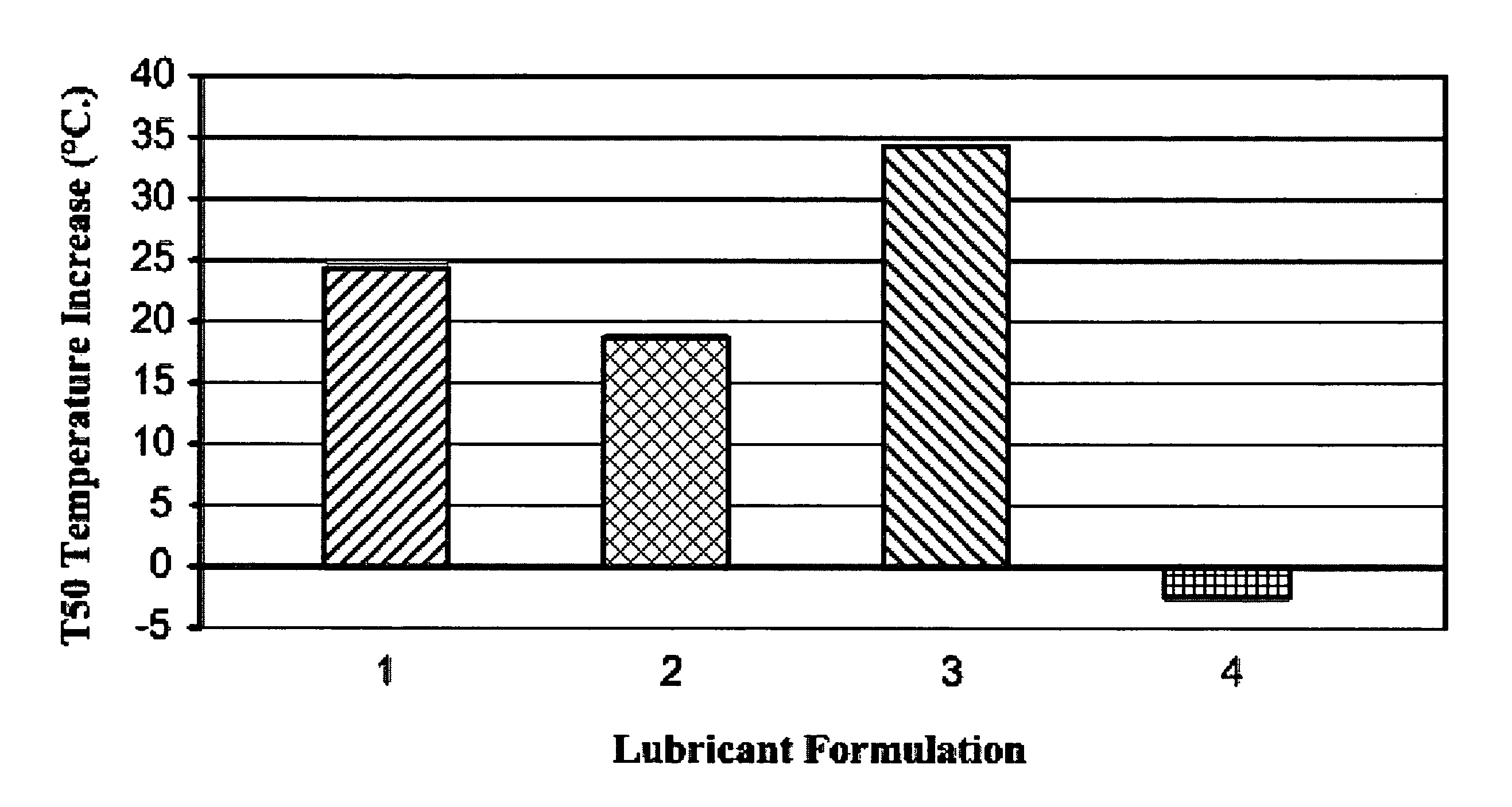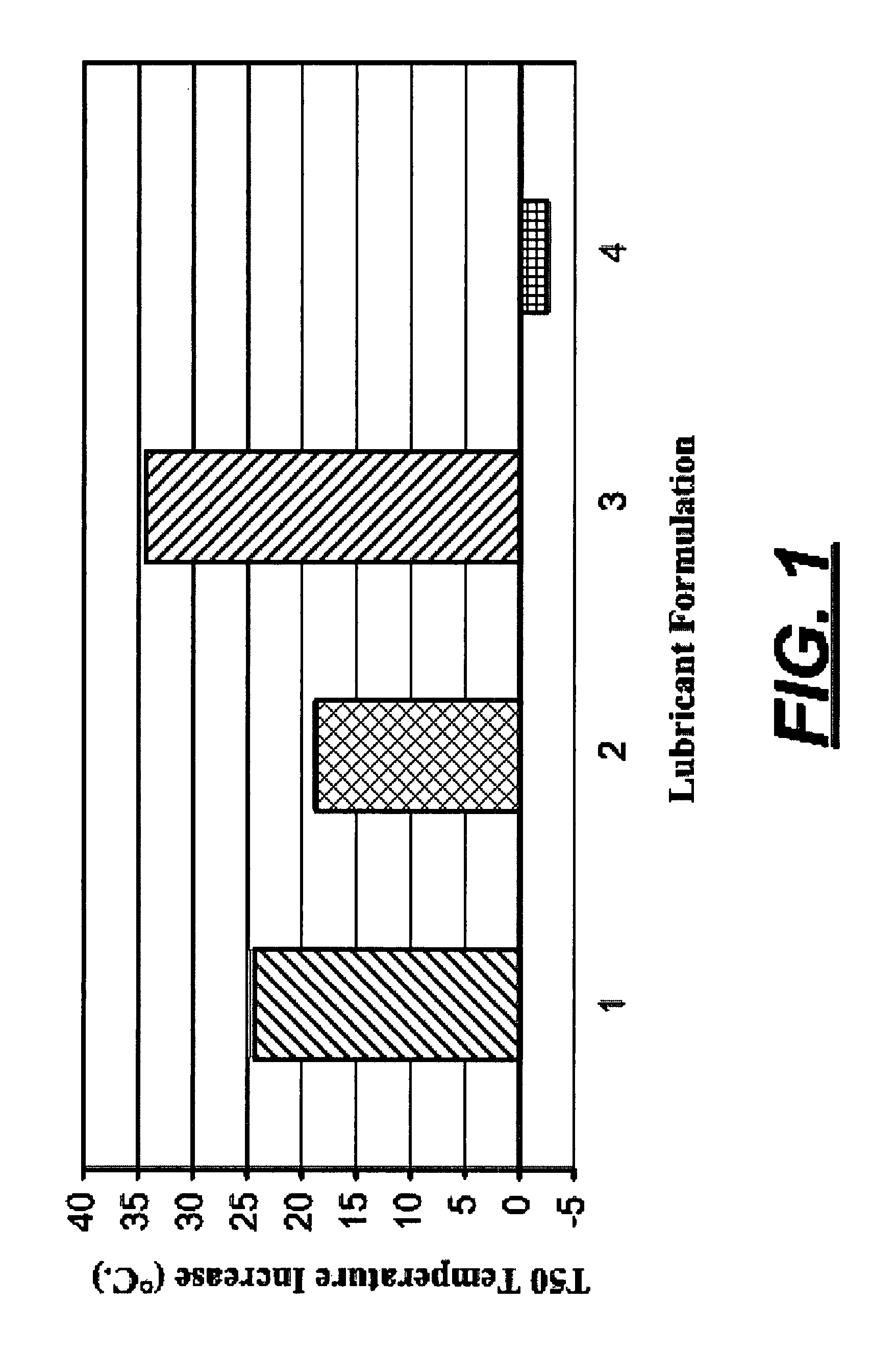Additives and lubricant formulations for improved catalyst performance
a technology of additives and lubricants, applied in the field of additives and lubricant formulations for improving catalyst performance, can solve the problems of loss of catalyst efficiency, low wear, oxidation and corrosion, and the inability to conveniently match the benefits of phosphorus additives for friction control and wear protection, etc., to achieve cost-effective, multifunctional performance, and low wear and corrosion.
- Summary
- Abstract
- Description
- Claims
- Application Information
AI Technical Summary
Benefits of technology
Problems solved by technology
Method used
Image
Examples
example 1
Titanium Neodecanoate
[0070]Neodecanoic acid (600 grams) was placed into a reaction vessel equipped with a condenser, Dean-stark trap, thermometer, thermocouple, and a gas inlet. Nitrogen gas was bubbled into the acid. Titanium isopropoxide (245 grams) was slowly added to the reaction vessel with vigorous stirring. The reactants were heated to 140° C. and stirred for one hour. Overheads and condensate from the reaction were collected in the trap. A subatmospheric pressure was applied to the reaction vessel and the reactants were stirred for an additional two hours until the reaction was complete. Analysis of the product indicated that the product had a kinematic viscosity of 14.3 cSt at 100° C. and a titanium content of 6.4 percent by weight.
[0071]Catalyst performance may be determined before and after an aging process by the performance of a Conversion Efficiency (CE) test. For the purposes of this disclosure, an “aged catalyst” is any catalyst that has previously been exposed to ex...
PUM
| Property | Measurement | Unit |
|---|---|---|
| mol % | aaaaa | aaaaa |
| mol % | aaaaa | aaaaa |
| mol % | aaaaa | aaaaa |
Abstract
Description
Claims
Application Information
 Login to View More
Login to View More - R&D
- Intellectual Property
- Life Sciences
- Materials
- Tech Scout
- Unparalleled Data Quality
- Higher Quality Content
- 60% Fewer Hallucinations
Browse by: Latest US Patents, China's latest patents, Technical Efficacy Thesaurus, Application Domain, Technology Topic, Popular Technical Reports.
© 2025 PatSnap. All rights reserved.Legal|Privacy policy|Modern Slavery Act Transparency Statement|Sitemap|About US| Contact US: help@patsnap.com



